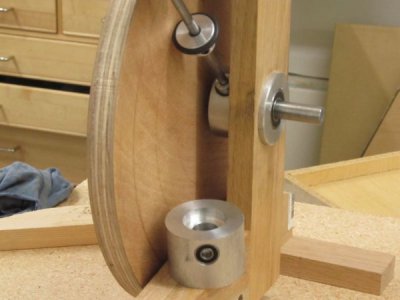- Joined
- Mar 19, 2014
- Messages
- 2,682
The way I read it, the OAL is 1.5", so steady rest is not much help. Turned OD and bored soft jaws would be the best way for me to do it.
Good point! OK then, I would bore it out all the way through to bearing OD size. Then make an internal bushing/spacer that would go between the bearings. This bushing/spacer could be a press fit or whatever. No flipping required. And no OD worries. Guaranteed perfect alignment…Dave
Last edited:

